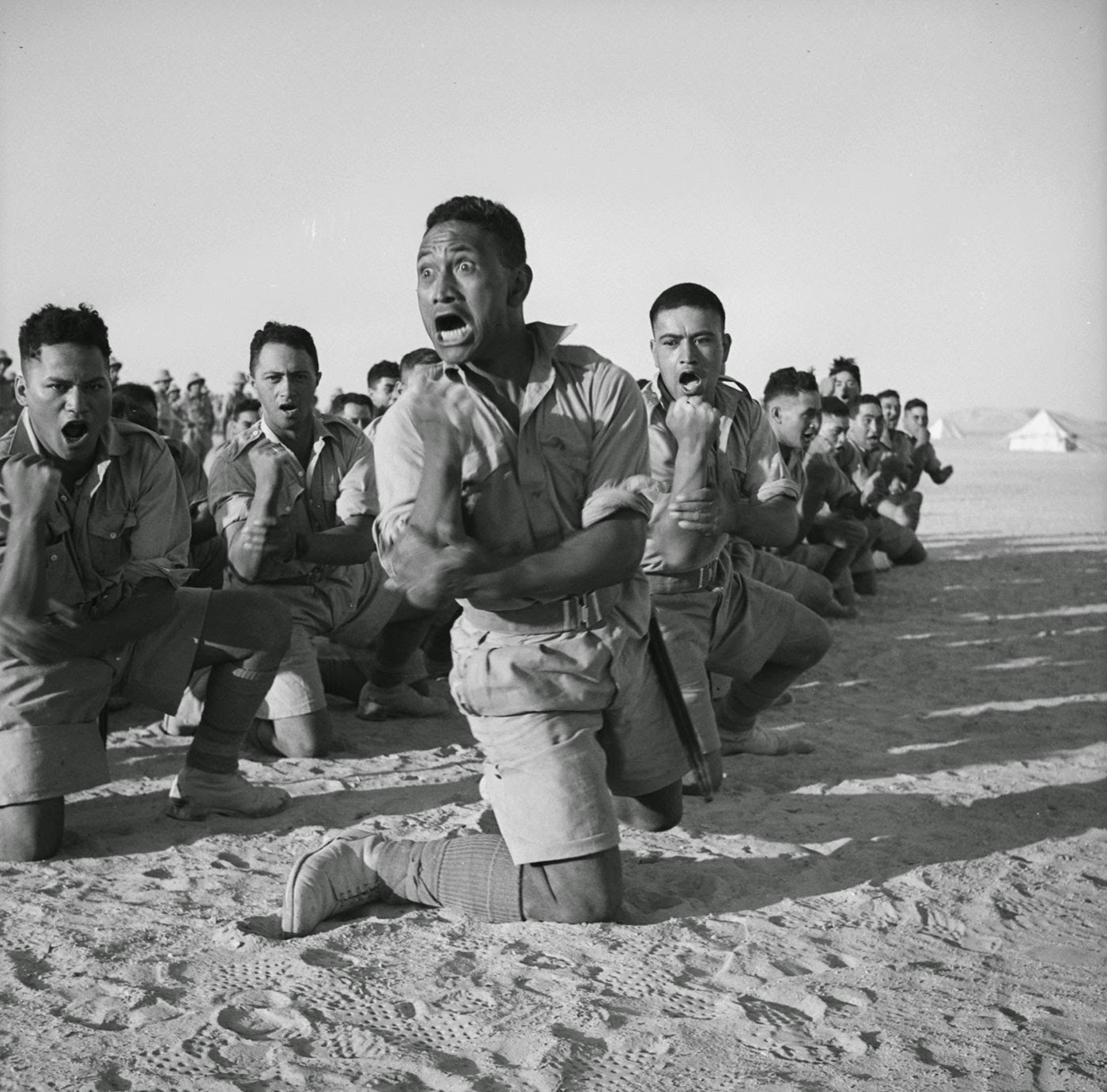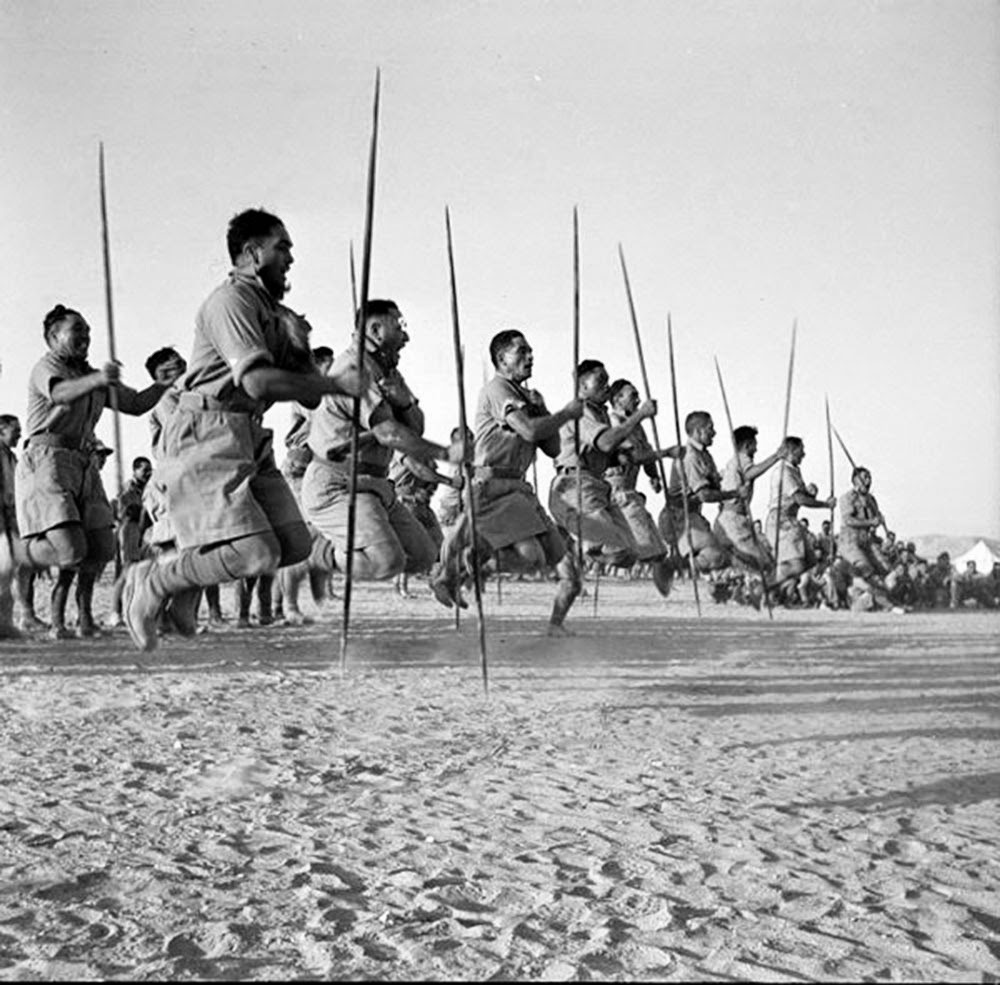The battalion fought during the Greek, North African, and Italian campaigns during which it earned a formidable reputation as a fighting force which has subsequently been acknowledged by both Allied and German commanders. After several confrontations with them, Erwin Rommel remarked: “Give me the Maori Battalion and I will conquer the world”. The Maori Battalion was divided into five companies: four rifle companies of about 125 men each and a headquarters (HQ) company of around 200 men. Each company was commanded by a major or captain. The Battalion’s four rifle companies (named A, B, C, and D) were organized along tribal lines, while HQ Company drew its personnel from all over Maoridom. The main body of the Maori Battalion left New Zealand as part of 2NZEF’s 2nd Echelon in May 1940. To maintain its strength throughout the war, especially when heavy losses were suffered, groups of new recruits were regularly sent from New Zealand. In total, almost 3,600 men served overseas with the Māori Battalion between 1940 and 1945. Of these, 649 were killed in action or died on active service – more than 10% of the 6,068 New Zealanders who lost their lives serving with 2NZEF in the Middle East and Europe. In addition, 1,712 men were wounded and 237 were prisoners of war. In the words of Lieutenant-General Bernard Freyberg, who commanded the 2nd NZ Division: “no infantry battalion had a more distinguished record, or saw more fighting, or, alas, had such heavy casualties as the Maori Battalion”. This sacrifice did not go unnoticed. The unit was among the most highly decorated for individual bravery of all the New Zealand forces. The people of New Zealand welcomed these volunteers home, and continue to honor them by upholding their legacy with memorials and vigils. The performance is the Maori traditional Haka. Haka is a traditional ancestral war cry, dance, or challenge from the Māori people of New Zealand. It is a posture dance performed by a group, with vigorous movements and stamping of the feet with rhythmically shouted accompaniment. Haka are performed for various reasons: for amusement, as a hearty welcome to distinguished guests, or to acknowledge great achievements, occasions, or funerals. War Haka was originally performed by warriors before a battle, proclaiming their strength and prowess in order to intimidate the opposition. Various actions are employed in the course of the performance, including facial contortions such as showing the whites of the eyes and poking out the tongue, and a wide variety of vigorous body actions such as slapping the hands against the body and stamping of the feet. As well as chanted words, a variety of cries and grunts are used. (Photo credit: National Archives or New Zealand). Notify me of new posts by email.
Δ Subscribe
.jpg)
.jpg)
.jpg)